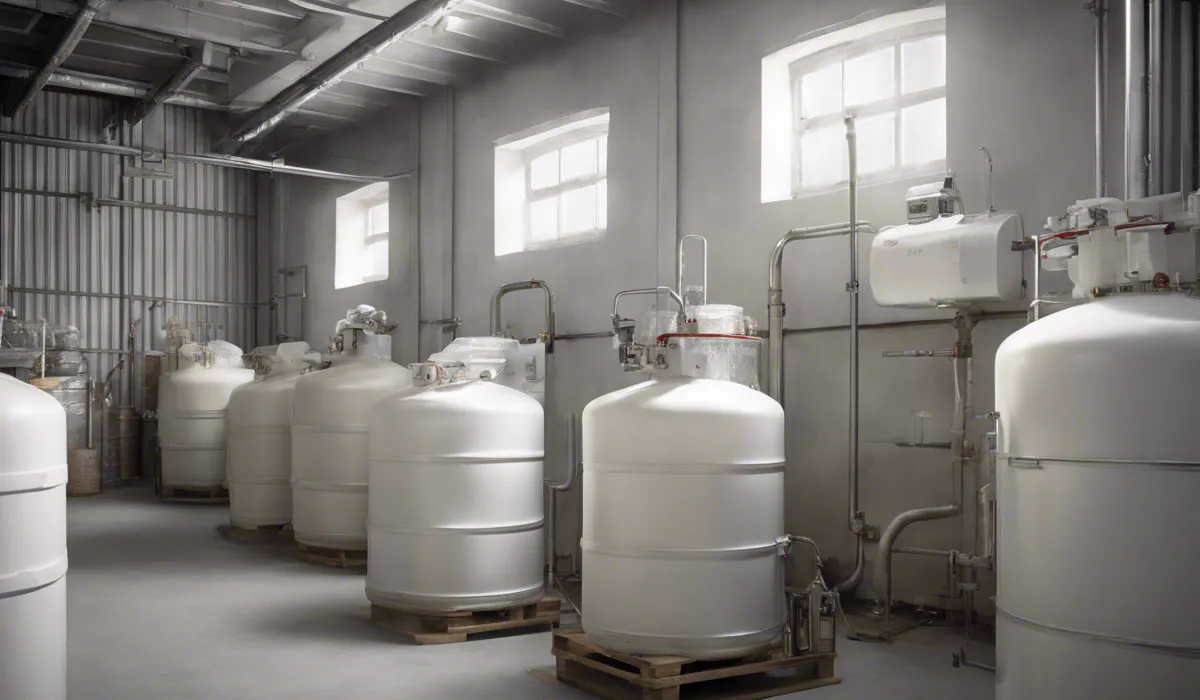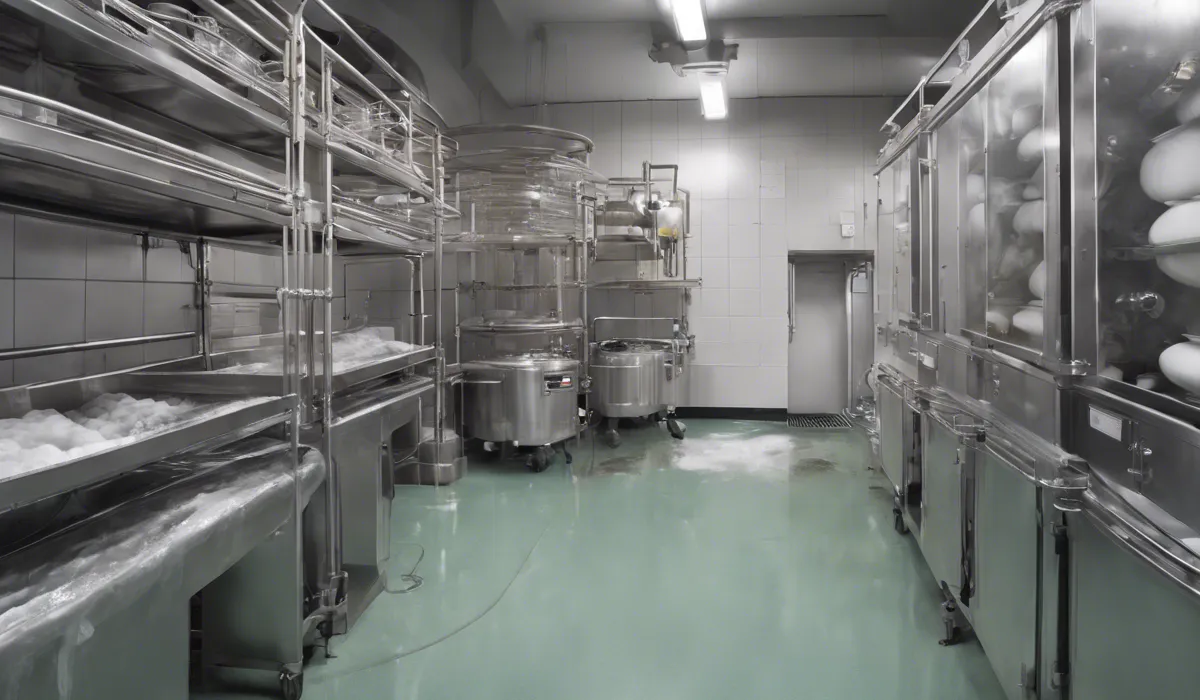To prevent mold during fermentation, keep the environment clean, use sterilized equipment, maintain an anaerobic condition by submerging the ferment under brine, and store it at a stable, cool temperature away from direct sunlight.
Choosing the Right Fermentation Environment

Importance of Temperature Control
To prevent mold and ensure a successful fermentation, controlling the temperature is crucial. Fermentation thrives at specific temperatures.
Too hot, and unwanted bacteria may take over; too cold, and the process could stall. A stable, cool temperature, typically between 55-75°F (13-24°C), is ideal for most fermentation projects.
This range helps to maintain an environment that encourages the growth of good bacteria while keeping mold at bay.
The Role of Humidity and How to Manage It
Humidity can be a friend or foe in the world of fermentation. High humidity levels can lead to mold growth, but some moisture in the air is necessary for certain ferments.
To balance this, use a hygrometer to monitor the humidity levels in your fermentation space, aiming for a relative humidity of around 60%.
If the air is too moist, a dehumidifier can help reduce moisture, while a shallow pan of water can add humidity if the air is too dry.
Selecting an Appropriate Space for Fermentation
Choosing the right spot for fermentation is a game-changer. Look for a space that’s clean, out of direct sunlight, and away from any contaminants.
A basement or a dedicated cabinet can be ideal. Ensure the spot is easy to clean and far from anything that might introduce mold spores, such as houseplants or fresh produce.
Airflow and Ventilation Considerations
Good airflow is essential for preventing mold. A space with proper ventilation allows gases produced during fermentation to escape while reducing the risk of mold spore accumulation.
However, too much airflow can dry out ferments. Strike a balance by ensuring some air movement without placing your ferment in the path of a strong draft.
Sanitation and Sterilization Practices

Cleaning and Sterilizing Equipment Before Use
Before you begin fermenting, every piece of equipment must be cleaned and sterilized. This includes jars, weights, lids, and any tools you’ll use.
Hot, soapy water followed by a rinse with a sanitizing solution can prevent mold spores from contaminating your ferment.
Using Anti-Mold Agents Safely and Effectively
Some ferments benefit from the use of anti-mold agents like vinegar or lemon juice. These agents lower the pH, creating an environment that’s inhospitable to mold.
Use them according to your recipe, ensuring they are distributed evenly throughout the ferment.
Preventing Cross-Contamination
Keep your fermentation projects separate from each other and from potential contaminants.
Use clean utensils for each ferment and avoid using the same tools for different batches without cleaning them in between.
This helps to prevent the spread of mold spores from one batch to another.
Regular Maintenance of the Fermentation Area
Regularly clean your fermentation area to keep it free from dust and mold spores. Wipe down surfaces with a vinegar solution and check for any signs of mold in the space, especially in corners and hidden areas.
Keeping the space clean is a proactive way to prevent mold from ever becoming an issue.
Monitoring and Controlling the Fermentation Process

Understanding the Signs of Healthy vs. Moldy Fermentation
Healthy fermentation should look clear or slightly cloudy and smell pleasantly sour. Mold, on the other hand, often appears as fuzzy, colorful spots on the surface.
If you see or smell anything off, it’s crucial to assess whether it’s safe to remove the mold and salvage the ferment or if the entire batch should be discarded.
Techniques for Monitoring pH Levels and Other Indicators
Monitoring pH levels is a reliable way to keep an eye on your ferment’s health. A pH below 4.6 generally means the environment is too acidic for mold to grow.
You can use pH strips or a digital pH meter to test your ferment. Also, keep an eye on the texture, color, and smell as additional indicators of the ferment’s condition.
Adjusting Environmental Factors to Prevent Mold Growth
If your ferment is at risk of mold, adjust the temperature, humidity, or airflow. For example, if the temperature is too high, move the ferment to a cooler place.
If humidity is a problem, use a dehumidifier or increase ventilation. These small adjustments can make a big difference in preventing mold.
When to Intervene and How to Correct Course?
If you notice signs of mold, intervene quickly. Remove any visible mold carefully, making sure not to contaminate the rest of the ferment.
If the mold has penetrated deeply, it’s safer to discard the batch. After dealing with mold, review your process to identify how it occurred and adjust your practices to prevent it in the future.
FAQs About Preventing Mold During Fermentation
How do I keep my fermentation environment clean to prevent mold?
Regularly clean the fermentation area with non-toxic cleaners and ensure all equipment is sterilized before use to prevent mold growth.
What is the importance of using sterilized equipment in fermentation?
Using sterilized equipment is crucial to prevent the introduction of mold spores and other contaminants that can spoil the ferment.
How can I maintain an anaerobic condition to prevent mold?
Maintain an anaerobic condition by keeping the ferment submerged under brine, which creates an environment where mold cannot thrive.
What is the ideal temperature for storing ferments to prevent mold?
Store your ferments at a stable, cool temperature, ideally between 55°F and 75°F (13°C and 24°C), to prevent mold growth.
How does sunlight exposure affect mold growth in fermentation?
Exposure to direct sunlight can raise the temperature and promote the growth of mold, so it’s best to store ferments in a dark place.
Final Thoughts
To stave off mold during fermentation, meticulous cleanliness is key. Employ sterilized tools and ensure an anaerobic environment by keeping the ferment submerged in brine.
Additionally, consistent, cool temperatures and protection from direct sunlight are crucial for a successful mold-free fermentation process.
